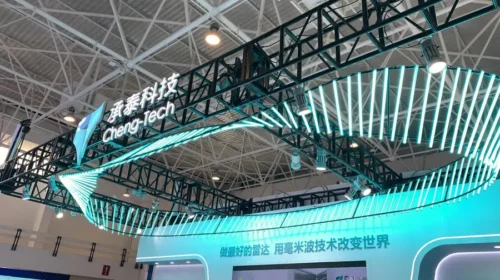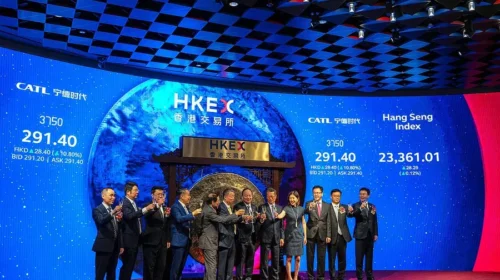Rising Lithium Prices Lift Ganfeng and Tianqi – But Not Equally

Tianqi’s stock is getting a bigger lift from soaring prices for the key metal in electric car batteries as it continues to rebound from a debt crisis two years ago
Key Takeaways:
- Tianqi and Ganfeng have issued major upside profit alerts, both boosted by surging prices for lithium that is their core product
- Despite the big profit gains, investors are more bullish on Tianqi as the company bounces back from a debt crisis two years ago
By Doug Young
A rising tide lifts all ships, but it may lift some more than others.
That seems to be the key takeaway, judging from recent trends for two of China’s top lithium producers, which have benefited hugely over the last year from soaring prices for the metal that’s a key component in new energy vehicle batteries. Lithium prices have jumped about fivefold this year alone, providing a huge boost for all producers.
But as we said at the outset, some producers seem to be getting a bigger lift than others from this rising tide. We’ll explore that theme in more detail by taking a look at the latest profit alerts from Tianqi Lithium Corp. (9696.HK; 002466.SZ) and Ganfeng Lithium Group Co. Ltd. (1772.HK; 002460.SZ), which both came out nearly simultaneously after markets closed last Friday.
We probably shouldn’t read too much into the timing of these two profit forecasts, even though the near simultaneous release does looks slightly coincidental. The fact of the matter is that most such big miners are state owned, and such companies from a single sector sometimes make this kind of announcement in lockstep when government policy is involved.
But in this case there don’t seem to be any policy implications, and instead the timing is more likely linked to stock exchange-mandated deadlines, since both companies are listed in Shenzhen, as well as Hong Kong, and are required to alert investors in advance to big swings in their profits.
And the swings are indeed big these days. In this case, the gains are being driven by the huge jump in lithium prices on soaring electric vehicle demand, most notably in the two companies’ home China market that accounts for more than half of global sales.
In terms of percentage changes, Tianqi takes the prize for biggest swing with the announcement that its third-quarter profit rose about 860% to between 5 billion yuan ($695 million) and 6.7 billion yuan from 608 million yuan a year earlier, based on our calculations using nine-month data supplied in the company’s latest announcement. By comparison, Ganfeng announced its third-quarter profit would rise by a more “modest” 600% to between 7 billion yuan and 8 billion yuan.
So, maybe these two gains are really not so different since both represent huge increases from year-ago levels. But investors didn’t see it that way. Tianqi’s stock fell 2.3% in both Hong Kong and Shenzhen in Monday trade after the announcements came out. Meanwhile, Ganfeng’s shares moved in the opposite direction, rising by 1.3% in Hong Kong and 2.5% in Shenzhen.
But if we look at the longer-term share price trends, things are just the opposite. Tianqi’s Shenzhen-listed shares are up 8% so far this year, while Ganfeng’s Shenzhen and Hong Kong-listed shares are down 13% and 36%, respectively, over the same period.
The conflicting signals require some background to understand, which could also shed some light on where these two stocks will head in the future, as lithium prices probably plateau in the next year and then return to more reasonable levels if and when the current bubble bursts.
Recovering Tianqi
The main key to understanding investors’ different attitudes toward these two stocks lies in Tianqi’s recent past. As recently as 2020, the company was on the edge of financial disaster as it struggled with big debt and loss-making operations. As recently as late 2020, the company nearly defaulted on $1.88 billion in loans it took out two years earlier to buy a Chilean miner as part of its global expansion.
Tianqi was still unprofitable as recently as the first half of last year when it posted a 78 million yuan loss for the six-month period. But then, of course, the tide began to rise for all lithium producers as the huge price run-up began, helping to not only rescue Tianqi but also raise it squarely into the black with a profit of 10.2 billion yuan in the first half of this year.
That profit was made possible by a similar sixfold increase in the company’s first-half revenue, which rose to 14.2 billion yuan from just 2.3 billion yuan a year earlier.
A similar phenomenon also occurred in the related sector for polysilicon, which is the main ingredient used to make solar panels. A spike in polysilicon prices over the last year with booming demand for green power has helped to make a stock superstar of major producer GCL Technology (3800.HK), previously a debt-laden company that also defaulted on some of its obligations as recently as early 2021.
We can compare price-to-earnings (P/E) valuations to show how, even after Tianqi’s overall stock gains and Ganfeng’s losses this year, investors still favor the latter over the former. Tianqi’s Hong Kong-listed shares currently trade at a P/E ratio of 7, compared with a 9 for Ganfeng. The story is the same for both companies’ Shenzhen listed shares, with Tianqi’s P/E of 11.5 trailing Ganfeng’s 14.
Tianqi’s business comeback seems to be lifting it past Ganfeng, with the former posting a first-half gross profit margin of 77% for its mining operations, ahead of Ganfeng’s 60% for the same period. Investors could also be growing slightly bearish on Ganfeng after the company disclosed in July it was being investigated by the mainland Chinese stock regulator for potential insider trading.
At the end of the day, Tianqi certainly seems to be getting more of a lift from the current boom in lithium prices than Ganfeng, though it’s admittedly coming from a lower base. That means that if current trends continue, we could expect to see Tianqi’s stock continue rising and Ganfeng’s falling until they trade at more similar P/E ratios.
Of course, all that assumes that lithium prices keep rising, or at least hold steady at their current levels. If the bubble bursts, then both companies will be judged more on their ability to manage costs, including their debt burden. In that regard Ganfeng looks like the stronger of the pair with a gearing ratio of 30% in the first half of the year, or about half the 59% ratio for Tianqi.
To subscribe to Bamboo Works free weekly newsletter, click here






